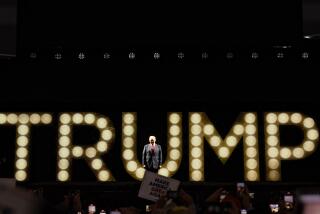Magazine Auditing Rules Get Overhaul
NEW YORK — The Audit Bureau of Circulations has given final approval to a sweeping overhaul of magazine circulation rules, opening the way for publishers to try new marketing efforts as they confront a steady decline in circulation.
Separately, the group also passed guidelines defining electronic sales of newspapers, allowing publishers to create and sell electronic editions of their publications and still have them count as paid circulation.
The revision to the magazine rules, the most far-reaching for the industry since the audit bureau was formed in 1914, received initial passage in March. Newspaper circulation rules also have been overhauled, and those changes received final approval in March.
The magazine rule changes were given final approval Saturday, with only minor revisions, at a meeting of the audit bureau’s board in Pebble Beach, Calif.
David Leckey, a member of the ABC board and circulation director at Hachette Filipacchi Magazines, said the measures were passed unanimously by the board’s 34 members, which include publishers of magazines and newspapers as well as advertisers.
“It’s certainly the most significant change I’ve seen since I’ve been in the business,” Leckey said.
At the heart of the changes was the abolition of the “50%” rule, which stated that no copy could be counted as paid circulation that was sold at less than half the basic price.
Now, copies sold at any price can be counted as paid circulation, but greater disclosure must be made of how much money is being charged for subscriptions. Advertisers want to see that information to gauge reader interest in a magazine.
Publishers have been seeking greater flexibility in how they discount and promote magazine subscriptions to combat a steady erosion in circulation as other media such as cable TV and the Internet compete for readers’ attention.
With the ability to price magazines more cheaply, publishers will be able to try new ways to attract readers, such as giving away subscriptions at little cost with season tickets to sports events or with memberships to health clubs.
For newspapers, which are also facing difficulties in keeping readers, the new guidelines governing electronic editions provide an important basis for reaching out to readers in emerging electronic media.
“This opens a huge window of opportunity for newspapers,” said Mary Jacobus, head of the ABC’s newspaper committee and publisher of the Duluth News-Tribune in Minnesota. “I think this will be very actionable stuff.”
The bureau has discussed electronic editions in the past, but Jacobus said the new guidelines set clear definitions of what constitutes an electronic edition of a newspaper as well as how it can be sold.
Though newspapers are just beginning to experiment with electronic sales models, audit bureau President Michael Lavery said, the new guidelines should open the way for increased use of electronic formats as demand for them begins to swell among readers.
An electronic edition will have to be clearly identified as a version of the main paper, but the editorial and advertising can vary, just as in regional editions of newspapers, Lavery said.
It can be delivered by any electronic means--e-mail, the Web or CD-ROM, for example--and will have to conform to the same rules as print versions to be counted as paid circulation, namely, to be sold for at least 25% of the basic price.
Lavery said magazine publishers also were considering ways to define and sell electronic editions.
More to Read
Sign up for Essential California
The most important California stories and recommendations in your inbox every morning.
You may occasionally receive promotional content from the Los Angeles Times.










